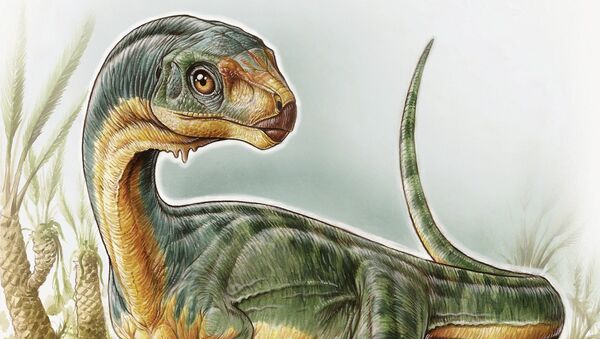Scientists used to think that carnivorous dinosaurs and their herbivorous prey were totally unrelated. However, a recent study published in the Royal Society journal Biology Letters by Matthew Baron, a PhD student at Cambridge University, and Professor Paul Barrett from London's Natural History Museum questions this point of view.
When the "Frankenstein dinosaur," or Chilesaurus, was inadvertently discovered two years ago, the scientists were perplexed.
"Chilesaurus almost looks like it was stitched together from different animals," explained Matthew Baron, a Ph.D. student from the University of Cambridge and a co-author of the new study on the puzzling dinosaur.
The three-meter creature had the head of a true carnivore, like Velociraptor and Tyrannosaurus, but his flatter teeth revealed that it didn't eat meat. In addition, it had the legs of an animal like a Brontosaurus, the hips of a Stegosaurus, and the arms and body of a Tyrannosaurus Rex.
The existence of Chilesaurus contradicts the currently acknowledged dinosaur family tree that considers the two branches, the "lizard-hipped" and the Ornithischians, or the "bird-hipped", unrelated. The classification was introduced 130 years ago.
The "lizard-hipped" group includes mostly carnivorous theropods like Tyrannosaurus Rex. The bird-hipped group unites herbivorous dinosaurs like Triceratops and Stegosaurus. Oddly enough, it's the "lizard-hipped" dinosaurs that are believed to be the ancestors of modern birds.
"Chilesaurus slots exactly in between the two groups. It is a perfect half-and-half mix," Baron told the BBC.
Simultaneously, the new theory elaborates on the previous work of the same scientists. Earlier this year, Matthew Baron published a study in the journal Nature in which he introduced a new dinosaur family tree based on the assessment of important dinosaur fossils from museums around the world. The new classification indicated that ornithischians were more closely related to the meat-eaters than was previously thought. From this point of view, the Chilesaurus is the missing link.
"Before this, there were no transitional specimens — we didn't know in what order these characteristics evolved," said Baron. "This shows that in bird-hipped dinosaurs, the gut evolved first, and the jaws evolved later — it fills the gap quite nicely."


